As part of the Textile and Light Industry Week at KNUTD and on the occasion of the “Vyshyvanka Day” holiday, students of the first (bachelor’s) level of higher education, Groups BSHMK-24 and BSh-24 of the EP “Modeling, Design and Artistic Decoration of Light Industry Products”, “Design and Technology of Garments” together with curator Halyna Oliynyk visited the National Museum of Decorative Arts, where they had a wonderful opportunity to view three separate thematic expositions.
At the exhibition “Sainska Zozulka. Ornamental Motifs of Ukrainian Embroidered Shirts of the 19th-20th Centuries,” dedicated to World Embroidery Day, students were introduced to rare examples of traditional Ukrainian embroidery. The exhibition featured authentic garments from various regions of Ukraine, including the Poltava region, Eastern Podillia, Chernihiv region, Ternopil region, Ivano-Frankivsk region, Kyiv region, Bukovina, Transcarpathia, and Rivne region, drawn from museum collections.
The majority of the exhibits showcased a wide array of cuts and styles of festive women's and men's shirts, each unique to its region. An engaging element of the display included individual fragments of ornamental motifs, which allowed for closer examination of embroidery techniques. The patterns were primarily composed of simple geometric forms – such as straight and oblique lines, zigzags, intersecting lines, squares, and rhombuses. These elements, arranged in distinctive regional combinations, reflected the rich ornamental diversity of Ukrainian embroidery traditions.
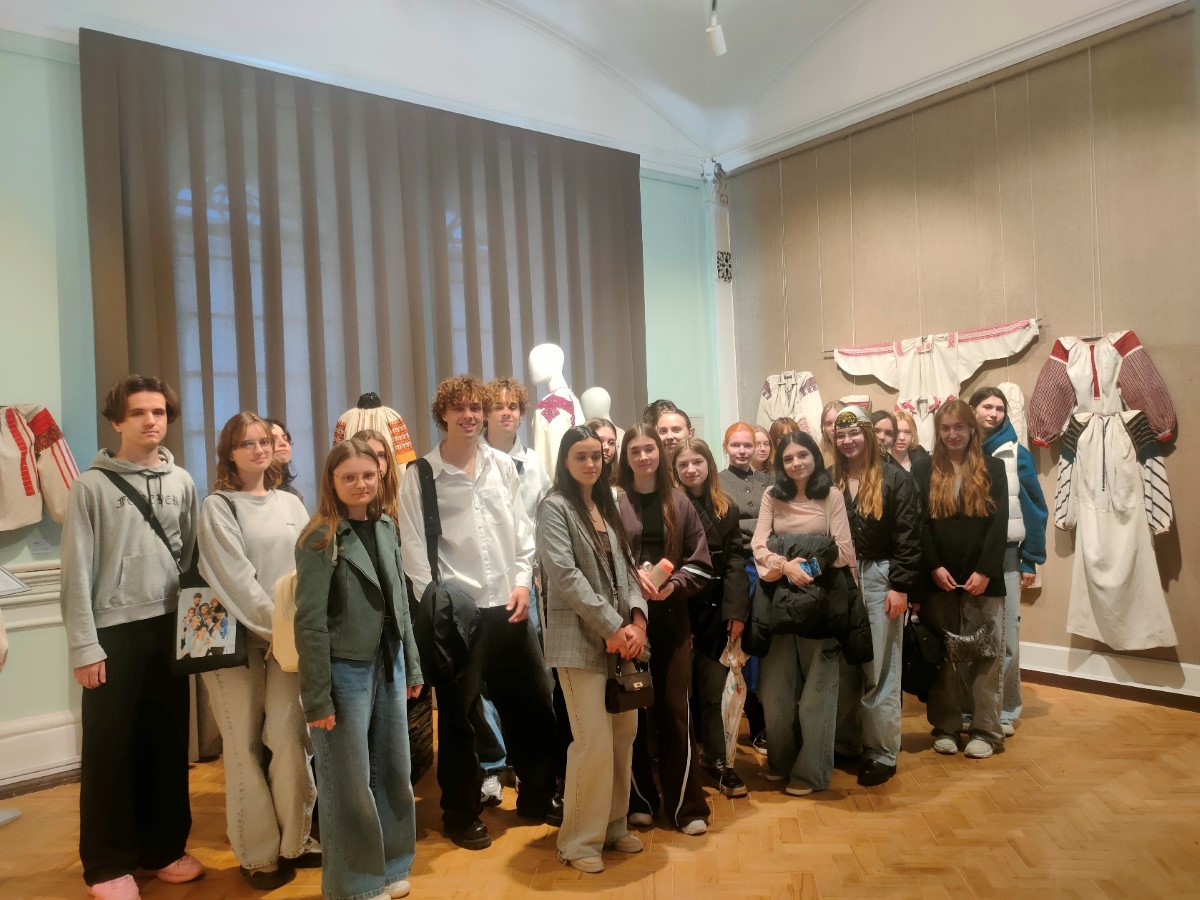
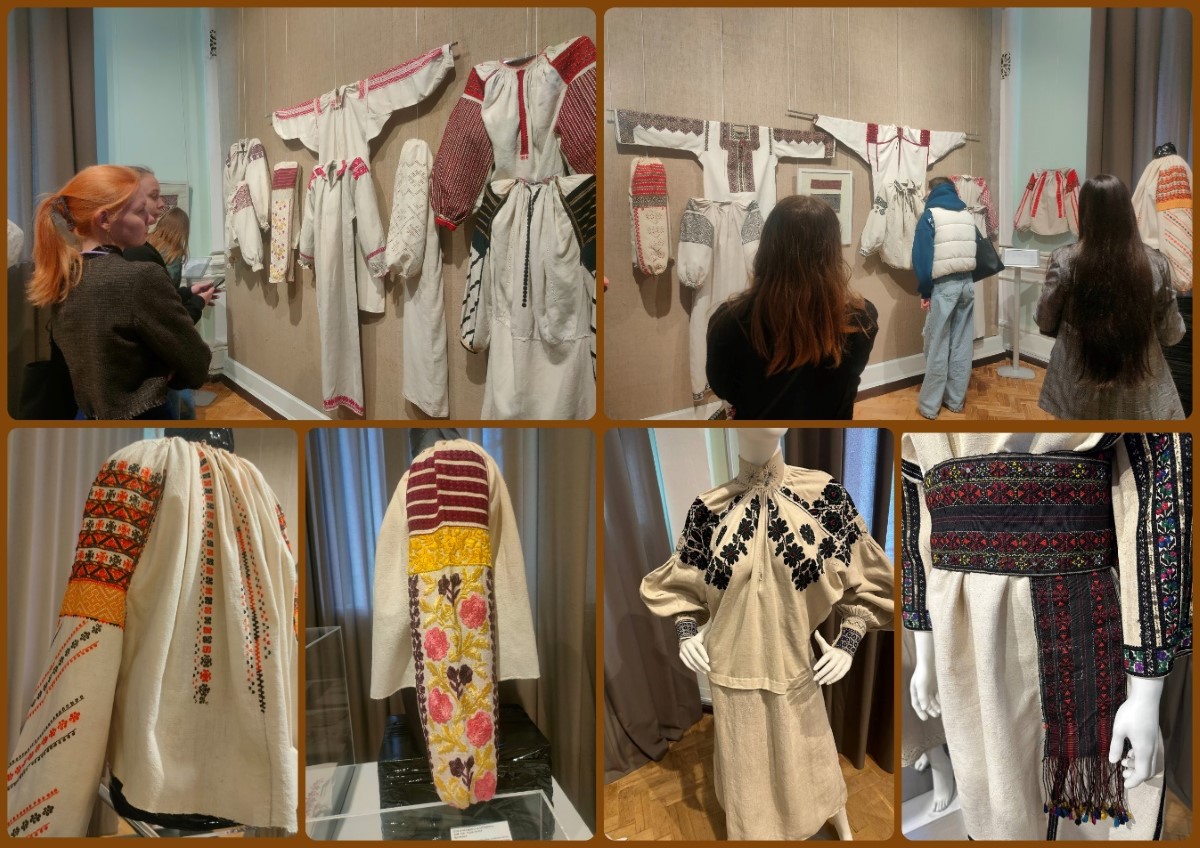
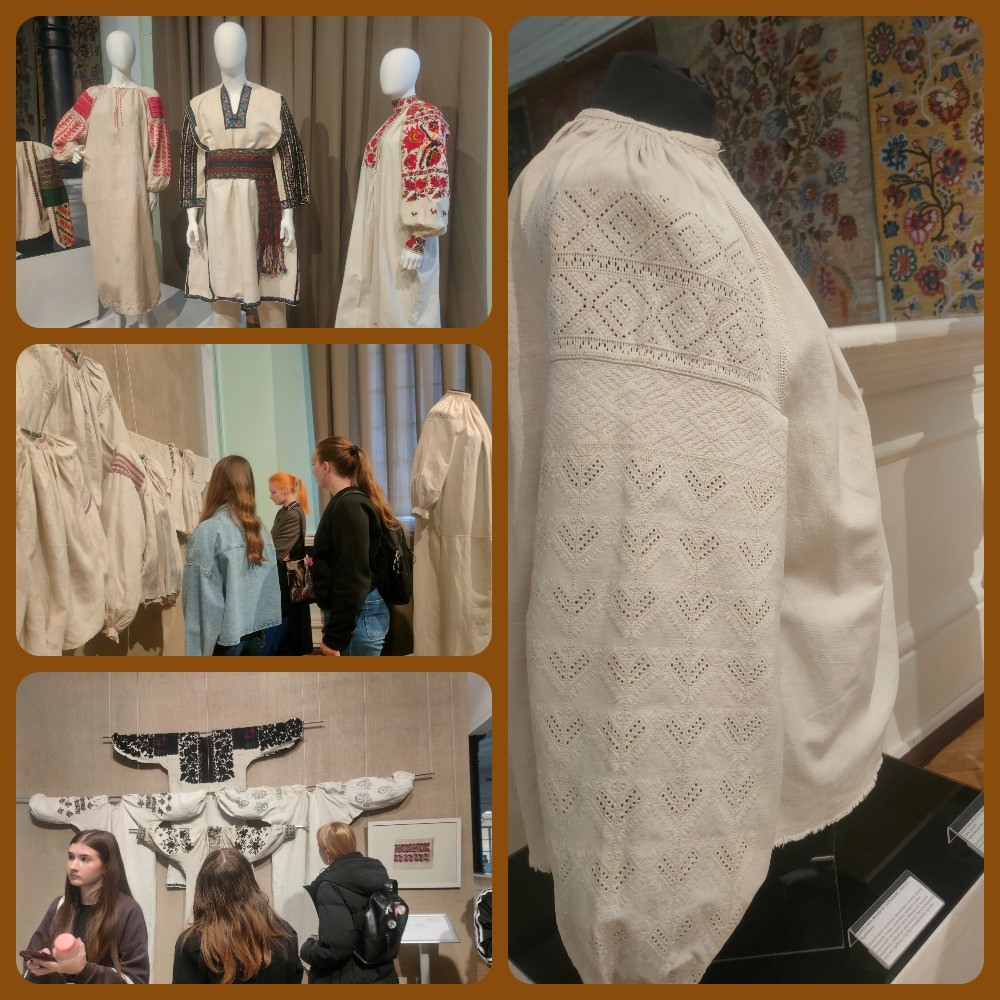
At the exhibition “Ivan Honchar. Podolsk Mockingbird”, higher education students had the opportunity to see works from the largest collection of works by Ivan Honchar in Ukraine, a recognized sculptor, artist and outstanding folklorist, collector and ethnographer. The students got acquainted with ceramic household items, decorative and zoomorphic vessels, candlesticks, toys, sculptures, genre compositions, as well as unusual multi-figure scenes, which are distinguished by subtle humor and originality.
The students were amazed by the artist’s amazing ability to convey human feelings through vivid images and expressiveness of characters, sometimes with humor, and sometimes with subtle sarcasm.
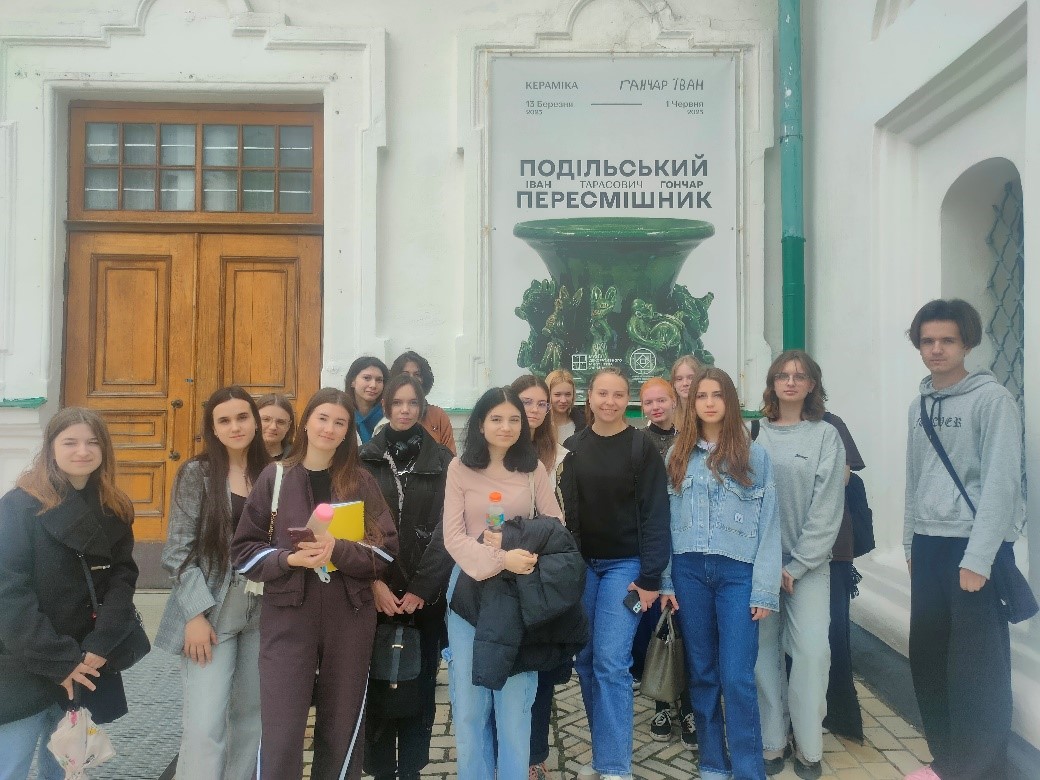
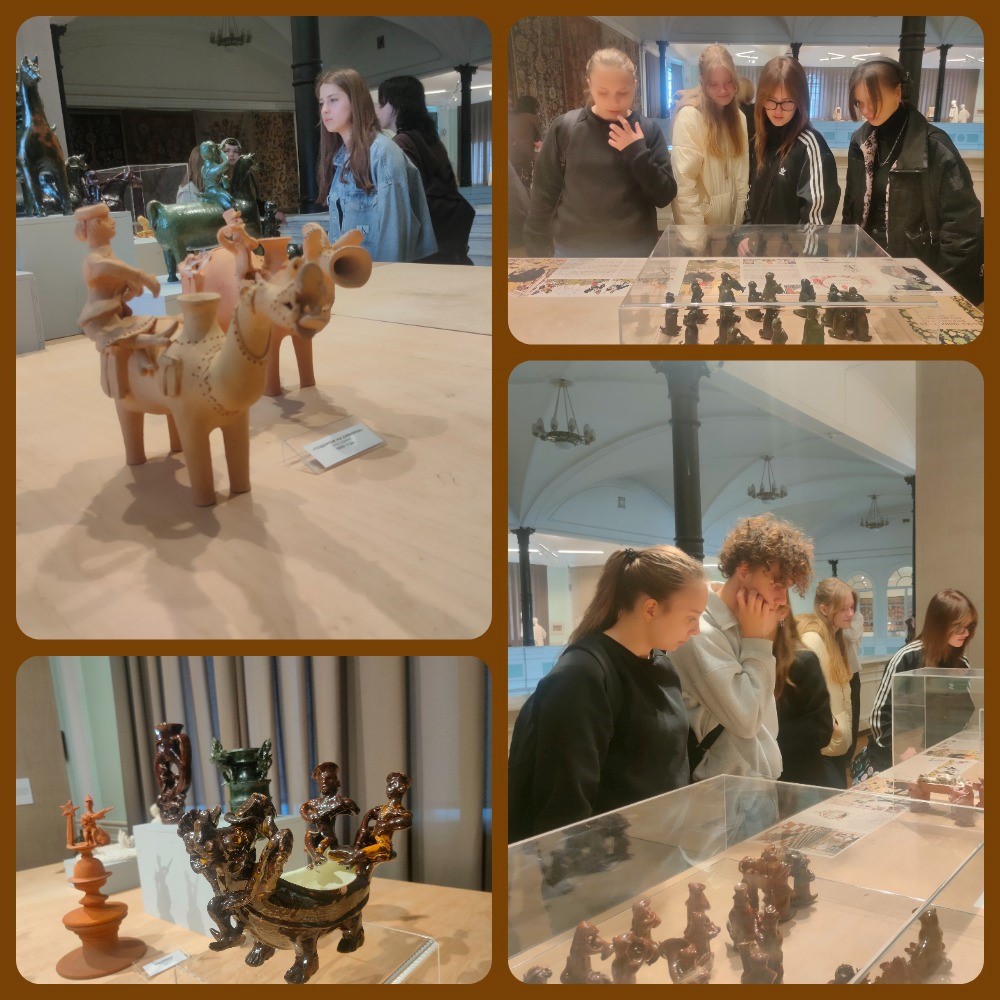
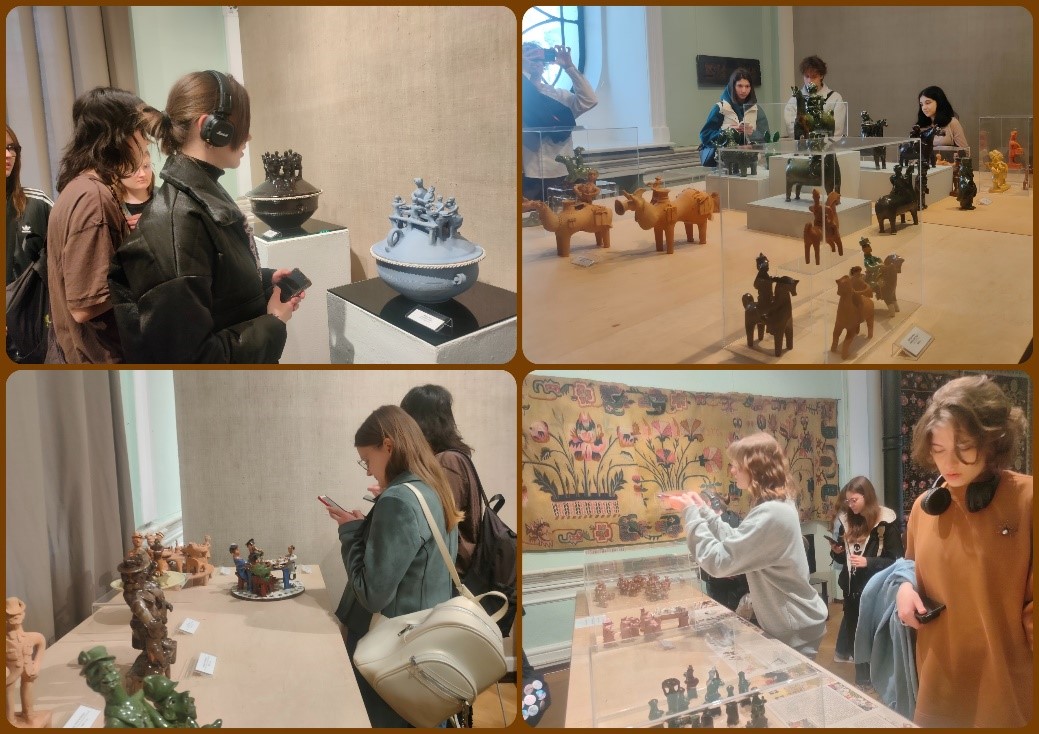
At the “Living Crafts” exhibition, students had the opportunity to view Ukrainian decorative art objects recognized by UNESCO as part of the world’s intangible cultural heritage. The exposition featured a wide range of traditional crafts from various regions of Ukraine, including ceramics, weaving, carpet weaving, embroidery, decorative painting, Easter eggs, and beadwork.
Among the most prominent exhibits were: Krolevets Pereborne weaving, Carpathian lizhnyk (woolen blankets), Hlynyany patterned textiles, Bukovyna taystra (woven bags), Obukhivtsy weaving, Opishnya ceramics, artifacts featuring Petrykivka decorative painting, Crimean Tatar ornament “Ornek”, Easter eggs from both left-bank and right-bank Ukraine, and Kosiv painted ceramics.
This exhibition provided a vivid illustration of the richness and regional diversity of Ukrainian folk art and underscored the importance of preserving traditional crafts as a vital part of cultural identity.
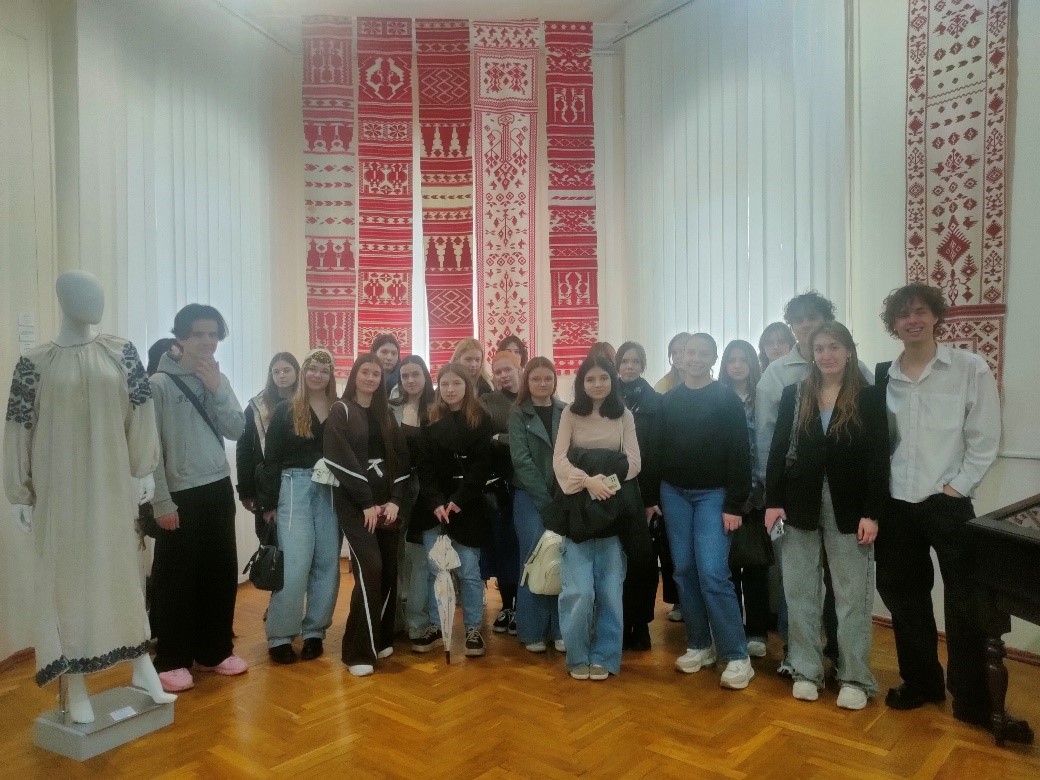
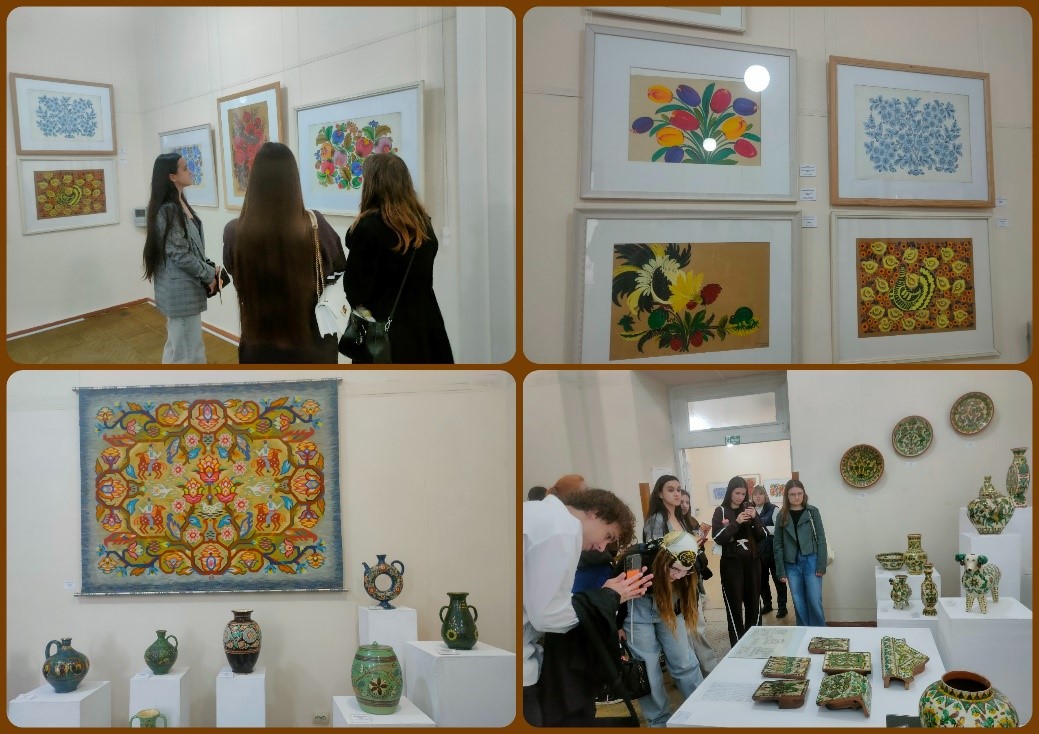
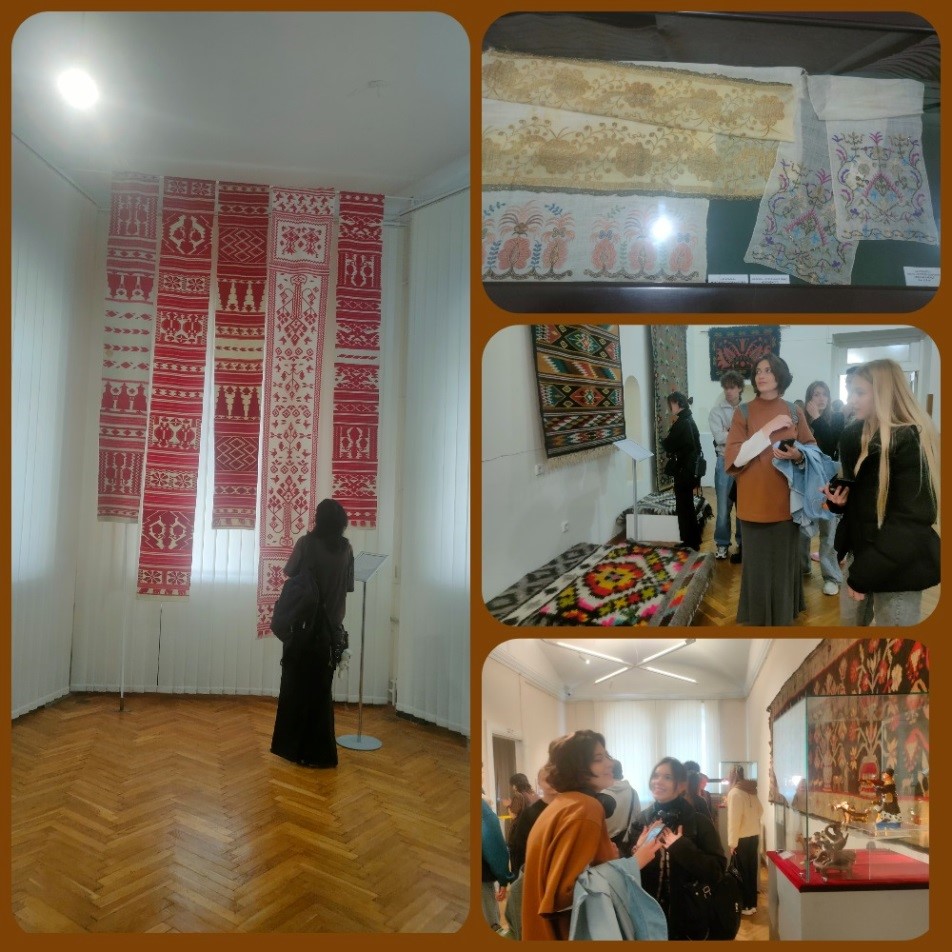
Visiting three art exhibitions became a significant educational and cultural experience for the students, deepening their understanding of the richness of Ukrainian tradition and art.
The exhibition “Sainska Zozulka” introduced students to unique examples of Ukrainian embroidery from the 19th-20th centuries, representing various regions of Ukraine. It showcased the diversity of ornamental motifs and distinctive cutting techniques, highlighting the artistry embedded in regional textile traditions.
The exhibition “Ivan Honchar. Podolsk Mockingbird” captivated visitors with the originality of Ivan Honchar’s work, unveiling lesser-known aspects of his artistic legacy. His ceramic pieces conveyed human emotion and mood with both humor and depth, offering a touching encounter with one of the most prominent figures in Ukrainian decorative art. The “Living Crafts” exhibition brought students closer to the living traditions of Ukrainian folk craftsmanship, many of which are recognized as part of the UNESCO World Heritage. From Easter eggs (pysanky) to weaving and folk painting, the wide variety of exhibits testified to the exceptional skill of Ukrainian artisans and underscored the importance of preserving cultural identity across generations.
Overall, these exhibitions not only broadened the students’ cultural horizons but also fostered a sense of national pride, awareness of Ukrainian heritage, and a deepened interest in studying and preserving folk art.
25.05.2025